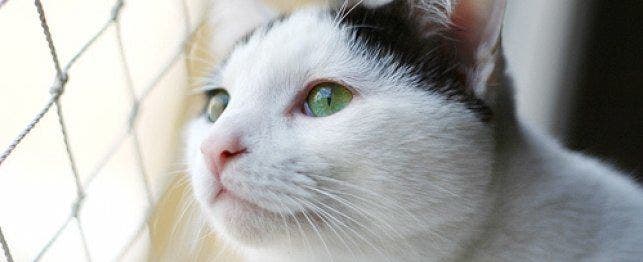
What Is Normal in Cats?
By knowing your cat’s normal body temperature, heart rate and respiratory rate, you can better tell if your pet needs medical care.
Body Temperature
Body temperature in animals is taken rectally. The normal body temperature for a cat is 100 to 102.5 degrees Fahrenheit. If your pet has a temperature less than 99 or over 104, contact your veterinarian immediately.
Mucous Membrane Color
The most commonly examined mucous membranes are the gums. The color of the gums is a good indicator of blood perfusion and oxygenation. The normal gum color is pink. If your pet has pigmented gums, lowering the eyelid can also give you an indicator of mucous membrane color. Pale, white, blue or yellow gums are cause for concern and you should contact your veterinarian immediately.
Capillary Refill Time
Briefly apply pressure to the gums and release. The area should blanch and rapidly return to the normal pink color. This test is referred to as the capillary refill time and is a crude method of assessing circulation. Normal refill time is 1 to 2 seconds. If the refill time is less than 1 second or over 3 seconds, immediate veterinary care is recommended. To practice, you can do a quick capillary refill test on yourself. Press down on the tip of your fingernail. The pink skin underneath the nail will blanch. When you release the fingertip, the color rapidly returns to normal.
Heart Rate
The heartbeat can be felt on the left side of the chest at the area where a raised elbow will touch the chest. Your pet should be calm and quiet. Place your hand over this area of the chest and feel for a heartbeat. You can also use a stethoscope if you have one. Count the number of heartbeats for 15 seconds and multiply that number by 4.
If you cannot determine your pet’s heartbeat, you can try to determine the pulse rate. The easiest pulse to feel is the pulse associated with the femoral artery. This artery is best felt inside the back leg in the groin area. Place your first two fingers up high on the inside of your pet’s thigh. Slowly feel the area until you can detect a pulse. This method may take some practice and you may want to ask your veterinarian for guidance during a routine exam.
Cats typically have heart rates between 160 to 220 beats per minute. If your pet has a heart rate outside the normal range, contact your veterinarian immediately.
Respiratory Rate
Counting the number of breaths per minute and determining the breathing pattern can be very important in an emergency. Learn the normal breathing rate and pattern for your pet.
Count the number of breaths your pet takes in 1 minute. A good time to count the normal breathing rate is when your pet is asleep. Normal respiratory rate in a cat is 20 to 30 breaths per minute.
Determining the breathing pattern is also important. Cats should not pant. If your cat begins panting and it is not due to a frightening or stressful event, consult your veterinarian immediately.
In a normal breath, the chest expands as the breath enters the chest. The chest then sinks as the breath leaves the chest. Exhalation requires no effort. If you notice your pet using his abdominal muscles to breath, gasping, making loud noises, taking shallow breaths, panting excessively or exhalation seems to be difficult, consult your veterinarian immediately.
If you are unsure if your pet is breathing, place a cotton ball or tissue immediately in front of the nose and mouth. If you see movement of the cotton or tissue, your pet is still breathing. Another method is to use a mirror. Place the mirror in front of the pet’s mouth and nose. If you see condensation on the mirror, your pet is still breathing.